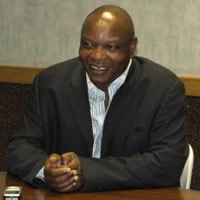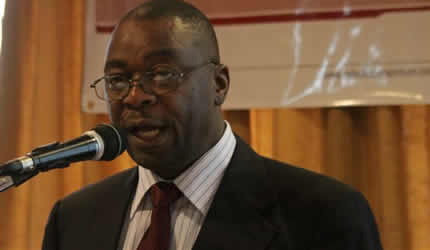Africa Agenda 2063: Pathways to realisation

Dr. Nkosazana Dlamini-Zuma
Fourteen years ago, during the debates that led to the Millennium Declaration and Development Goals, our continent was regarded as the “21st Century’s Development Challenge” and a scar on the conscience of humanity. At the same time, Africa too reflected on its future, on how to take the continent out of the preceding two dead decades for development. Thus, we transformed the OAU into the African Union, vowed to tackle conflict in a co-ordinated manner and adopted the New Partnership for African Development (NEPAD).
Fourteen years later, Africa is the world’s second fastest growing region, and home to six of the world’s fastest growing economies. Several others were above or near the 7 percent threshold for economic take off, which (AfDB president Donald) Kaberuka calls the tipping point and set to double their economies in 10 years.
We are also a continent of the future, with a young and growing population, a growing working and middle classes, and our abundant natural resources, including land, minerals, gas and oil, forests, biodiversity and maritime resources. Thus, I repeat with confidence: Africa has transitioned from being the 21st Century’s development challenge, to being the 21st Century’s development opportunity.
We do know from our history and that of others, that opportunities can be squandered and lost. It is our determination not to be characterised by future generations of Africans for squandered opportunities that prompted us to embark on the process of Agenda 2063, a Pan African framework to rapidly move towards an Africa that is integrated, peaceful, prosperous and people-centred.
Industrialisation, domestic resource mobilisation, finance and monetary institutions — are critical to the realisation of Agenda 2063 in the longer term and the post — 2015 development agenda in the short term.
Africa must “design a comprehensive industrial development framework that is inclusive and transformative to speed up and deepen value — addition of local production, linkages between the commodity sector and other economic sectors.” Our discussions must assess the consolidation of nascent industrialisation initiatives and sectors.
This assessment must look at the agro — processing sectors in all countries for cocoa, coffee and other agricultural products in Cote d’Ivoire, Ghana and Ethiopia; at the ICT sectors in Rwanda and Kenya; at the textile and fashion industries in West, Central and Southern Africa; tourism and the blue economies of Seychelles and Senegal , of Mauritius and Madagascar; the fishing industry in the Gulf of Guinea; at the work done by institutions such as the Central African Forestry Commission (COMIFAC) on forest policy convergence and with the East African Coastal forests to promote sustainable forestry and eco-tourism and whether Botswana can indeed become the world’s leading global diamond trader.
Industrial policy assessment is also about assessing the impact of our infrastructure projects: the gas pipeline between Nigeria and Algeria; the Sahara- ahel transport corridor; the African Clean Energy Corridor Initiative; the Djibouti to Dakar transport corridor and mother others and whether these projects not only contribute towards reducing the cost to industries, but also as drivers of industrialisation, technology transfer and skills development.
Assessment must also check best practice in terms of industrial and trade policy instruments — such as the local content requirement that Ghana introduced in its oil and gas industries; the monetary policy requirements for industrialisation and growth discussed by the African Central bankers the activities of our various national export and investment promotion councils; the implementation of the African Mining Vision and the impact of our trade partnerships on industrialisation and intra-Africa trade.
We must also know what is happening with the African private sector, both formal and informal, including the SMME sector.
In addition, there are the emerging Pan African businesses, in cement manufacturing, mining, oil and gas, ICT and banking and the growing numbers of young successful and innovative African entrepreneurs (men and women) in virtually every country.
Industrial policy won’t succeed without conscious efforts to build African champions and without dynamic dialogue and interactions between government and the private sector, at sectoral, country, regional and continental levels.
Indeed, industrial policy must be accompanied by our integration efforts towards a continental free trade area by 2017, and we must do nothing that would jeopardise this.
We need the skills revolution to train hundreds of thousands more scientists, engineers and artisans, working together with the private sector and by investing in science, technology, research and innovation.
Institutions
The two dead decades of structural adjustments not only saw stagnation and de-industrialisation, but also the destruction of institutional capacity for industrial policy, support and planning. Although we cannot turn back the clock and rebuild these capacities overnight, we can leapfrog some of the challenges through the regional and continental institutions that we agreed to put in place, to help all our countries to navigate this path of structural transformation.
Discussions on the Statutes of the African Monetary Fund, and on the ratification and strategy for the African Investment Bank and the African Central Bank respectively are therefore important, so that we can get these institutions up and running. We must also be reminded about the decision taken by the January 2014 Summit on the African Remittances Institute.
Domestic resource mobilisation
We have over the last few years studied this matter in detail, ranging from the report of former president Obasanjo presented last year on Alternate source of Funding, the 2013 NEPAD-ECA study on Domestic resources for African development to the progress report of the Panel chaired by former President Mbeki on Illicit flows from the continent.
All these studies show that given Africa’s enormous resource potential, we indeed have the means to invest in the acceleration of our development priorities, and in the process leverage and crowding in even greater funding and resources from our partners across the world .
Fellow Africans, industrial policy, building institutions, even domestic resources mobilisation and indeed transformation, is not done until it is done. It is only then that we can say, as the Nelson Mandela taught us: it is impossible, until it is done.
Dr Nkosazana Dlamini Zuma is Chairperson of the African Union Commission. This article is reproduced from The African Executive











Comments